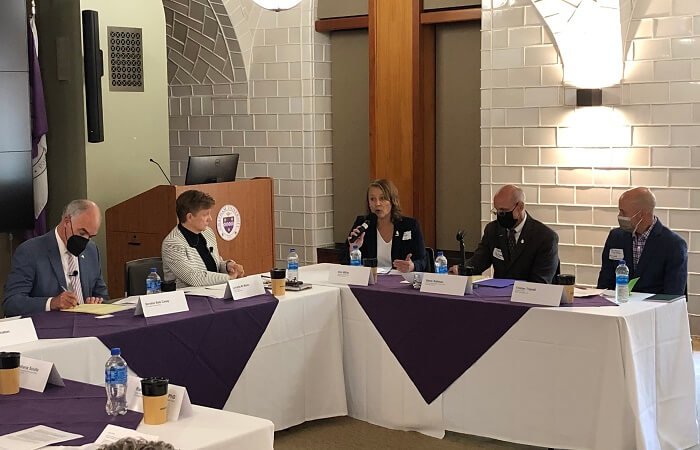Technology Can Help Save Worker Lives
National Safety Council convened in Pittsburgh to discuss a continuing safety epidemic: workplace fatalities.
National Safety Council convened in Pittsburgh to discuss a continuing safety epidemic: workplace fatalities.

When NSC was formed in the wake of Manhattan’s Triangle Shirtwaist Factory fire – a tragic event still regarded as one of the deadliest industrial disasters in U.S. history – safety leaders from across the country convened in Pittsburgh to drastically improve worker health and wellbeing. In the more than 100 years since this exchange, NSC has remained at the forefront of tackling the most pressing safety challenges our nation has faced, from wearing seat belts to addressing COVID-19 safety practices, so it’s only fitting the Council convened in Pittsburgh once again to discuss a continuing safety epidemic: workplace fatalities.
In 2020, more than 4,700 people died on the job in the U.S., and that number of fatalities has remained consistent over the past several years. Recognizing no workplace fatality is acceptable – and that every workplace death is preventable – NSC launched the Work to Zero initiative with the goal of eliminating workplace fatality risks through the use of life-saving technology.
In addition to leveraging technological advancements and global collaboration, engaging policymakers is key. Last month, Pennsylvania Senator Bob Casey joined NSC in convening a roundtable of leaders from labor unions, technology companies, academia and more to discuss safety technology innovation and its ability to save lives on the job.
Additionally, earlier this summer, the U.S. House and U.S. Senate released the FY23 Department of Labor and Health and Human Services appropriations bills with language directing OSHA and NIOSH to gather stakeholders to examine workplace safety technology. These discussions could not be timelier, as the recent passage of the Infrastructure Investment and Jobs Act (IIJA) – a historic investment that will create hundreds of thousands of jobs to modernize roads, bridges, transit and broadband infrastructure – makes it more important than ever to equip employers and frontline workers with access and information to the latest safety technologies available.
Ensuring workers return home in the same way they came to work should be our top priority in the workplace, and promising technology solutions exist that can make a big impact to reduce fatalities. I am glad to see policymakers promoting this conversation, as we have much to learn from all stakeholders. Please join NSC and its Work to Zero initiative to support these important efforts to save lives in the workplace.
With a century-long legacy, the National Safety Council is a global center for safety expertise. Let's work together to align resources. We look forward to learning about ways we can join efforts to expand safety everywhere!
There are no items in your cart